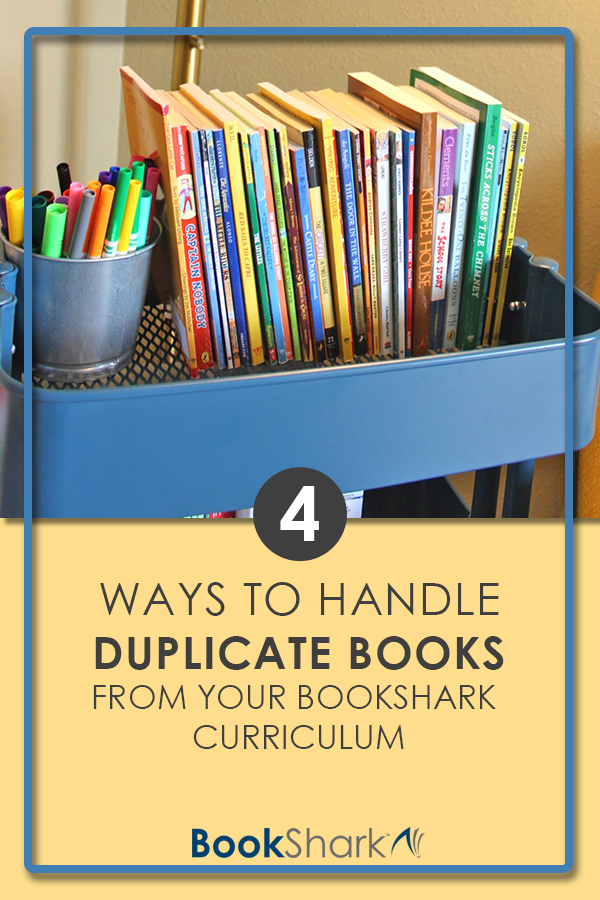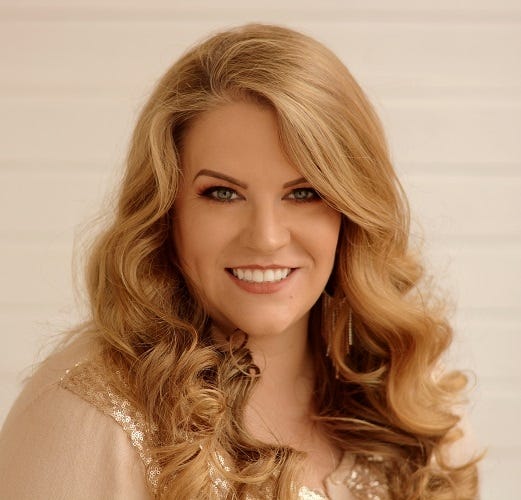




4 Ways to Handle Duplicate Books From Your BookShark Curriculum

My kids consume books like air, and there are entire homeschool days when we get so lost in a story that we forget to do math. If you’re considering buying any of BookShark’s literature-based programs, then I’m sure you can relate. There is just nothing that beats the feeling of being swept up in words, and my kids respond really well to the time spent cuddled up together, lost in historical fiction.
BookShark, naturally, is a perfect fit for voracious and eager readers. Sometimes, though, an issue arises with my order that I know other readers can relate to: We already have some of the books included in the curriculum package.
Because we’re big book lovers, our nightstands tower and our shelves sag with lots and lots of books. Given the thought and standards that BookShark uses when selecting titles for their bundles, it’s expected that there will be some crossover now and then.
Why Order Duplicates in the First Place?
When I first started looking into BookShark I fell immediately in love with the model, but hesitated at ordering. It didn’t make a lot of sense to order books I already had—to invest in a box full of goodies that contained duplicates.
I considered using their book list to search out and purchase titles individually, to order only the books I didn’t have on hand already. I put a few hours into comparing prices, hunting down editions, and building my own mini collection. But I discovered that not only did it save a lot of time to order the pre-made bundle, it actually saved me quite a bit of money to get the BookShark discount.
- All-Subject Packages are discounted 20% off retail.
- Reading with History Packages are discounted 15% off retail.
- Science Packages are discounted 10% off retail.
With my savings pocketed and our books added, though, I had to decide what I would do with the extra titles. Knowing we aren’t the only ones finding themselves in this situation, I decided to help you, fellow book-lovers, find uses for duplicates.

1. Books on the Go
As you know by now, education isn’t limited to four walls. Between appointments, field trips, lunch dates, play dates, sports, traffic, or just afternoon drives, we find ourselves away from home quite a bit. Rather than needing to plan the night before to pack up our studies and lug around a heavy bag, we keep some of our extra books in the van, allowing the kids to pick up where they left off without needing to pack.
Having extra copies in the car means you never have to feel bad about last-minute rides or unread books. Whether your child reads out loud to you or silently to themselves, they always have quality literature within reach. We’ve even sent a few books over to their grandparent’s home, so Nana and Poppy are able to join the learning!
2. Reading Buddies
Find a friend for your child and give them the extra book so that they can read it together! Set up opportunities for weekly discussions, creating a miniature book club customized just for your family.
3. Clean Copies and Marked Copies
Some book lovers may need to avert their eyes for a bit with this revelation: I sometimes write in books.
I know, I know. It’s unimaginable to some. But every now and then, I come across a passage that is particularly moving, inspiring, or beautifully-written. Sometimes there are paragraphs I want to come back to or dialogue I want to discuss with someone. There may even be words or locations I’m not familiar with, so I take note of them.
Some of my kids, though, are distracted by notes on a page. They can’t see past brightly-highlighted conversations or end up focusing on my scribbles more than their reading. Having a second copy means I can take and make all the notes I need while maintaining a crisp, clean copy for the kids who need to read in black and white.
Another fun option for writing in your extra copy is black out poetry, where words are marked out and some are left showing, creating new poems or stories with the remaining words. It’s extreme and means a book can’t be re-used, but it’s
4. Donate
The easiest, and possibly most obvious, use for a duplicate book is to donate it.
Local foster families, tutoring centers, case workers, or counselors are always in need of quality literature to pass on to children in need. Check with your local homeschooling groups to see if there are any families in need who might be studying something similar. Ask your school teacher friends if their classrooms could benefit from a great story, or check in locally-owned bookstores, consignment shops, or your local library to see if they can pass the book to someone who would love it as much as you.
There are many reasons to dive into BookShark’s program, and owning two copies of the same book should never stand in the way. There are plenty of options for making use of the extra, so what’s stopping you from doubling up today?

About the Author
Jennifer Vail proudly lives in the great state of Texas with her very handsome husband and three very funny children. All three kids are educated in three very different ways according to their very different needs, which is exhausting but fulfilling. Jen’s hobbies include naps, 90’s pop culture, Netflix binges, buying books with the best of intentions to read them all, photography, and extroverting. She holds a degree in counseling but has found her calling by writing for and spending time with families of differently-wired, outlier kids—the square pegs of the round world.
She stays up way too late and drinks way too much caffeine, but has no intention of changing either. She is the community manager and contributing author at Raising Lifelong Learners where she writes about homeschooling gifted, anxious, and otherwise different kiddos, but also rambles at This Undeserved Life from time to time. She feels compelled to mention that she still very much loves the Backstreet Boys and rarely folds her laundry.